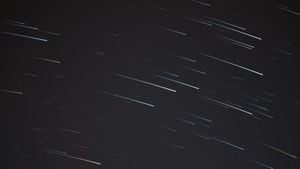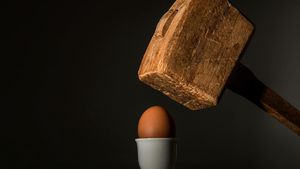After seven months residing and working aboard the International Space Station (ISS), the astronauts of NASA’s SpaceX Crew-8 mission have splashed down safely off the coast of Florida, marking the completion of their significant expedition. This mission not only showcased the capabilities of private-public partnerships within NASA's Commercial Crew Program but also highlighted the valuable data gathered during the astronauts' time in orbit.
NASA astronauts Matthew Dominick, Michael Barratt, and Jeanette Epps, along with Roscosmos cosmonaut Alexander Grebenkin, engaged actively with numerous research mission projects aimed at benefiting humanity. These experiments underlined the importance of low Earth orbit (LEO) as testing ground for scientific innovation. Missions like Crew-8 are part of a broader push to establish sustainable human presence and operations beyond our planet. It’s like paving the way to future off-planet living, right?
During their time aboard the ISS, Crew-8 participated in various investigations steered by the ISS National Laboratory. These studies revolved around stimulating advancements across several sectors, including life sciences, physical sciences, and technology development. One notable project focused on the manufacturing of stem cells, which could potentially lead to breakthroughs for treating conditions like heart disease and neurodegenerative diseases, establishing new avenues for biomanufacturing.
An intriguing aspect of their mission included collaborations aimed at crystallizing organic molecules using Redwire Corporation’s platform, which may facilitate the development of improved therapies for various health issues. It’s fascinating how working aboard the station can lead researchers to rethink how we produce medicines down on Earth!
Another major highlight of their mission revolved around efforts to innovate biosensor technologies. The astronauts supported the third experiment launched by the University of Notre Dame, which aims to refine biosensors capable of detecting minute substances, including early cancer markers. Using microgravity conditions allows for new methods of capturing particles, enhancing the potential for early disease detection. Now, doesn’t the prospect of using space for detecting cancers sound out of this world?
Beyond health-related scientists’ inquiries, Crew-8 also contributed to technology upgrades. They tested Big Sky—a new camera being developed by Sphere Entertainment—under the unique conditions of microgravity. This technology aims to capture ultra-high-resolution images, making each snapshot a possibility for incredible content, possibly changing how we view space missions and imaging altogether. It's like turning space exploration footage from ordinary to extraordinary.
Just as the Crew-8 astronauts were tying up their projects, they also offered their insight and expertise to projects slated for the upcoming Crew-9 mission, showcasing their collaborative spirit. One compelling effort was led by Isabel Jiang, the winner of the 2023 Genes in Space competition. Her project investigates how radiation affects gene editing processes, which could extend protective measures for astronauts and address genetic risks tied to space travel.
Another project involved studying plant growth under different altitude conditions: the experiments hoped to answer variability questions around root growth for Arabidopsis plants—yes, those are little mustard plants! By comparing plants grown on the ISS with those grown at higher altitudes, researchers are eying improvements for crop production ideally suited for long missions, hinting at what future space settlers might grow.
The Crew-8 astronauts arrived back to Earth packed with insights and information gathered from cutting-edge research projects. They’ve paved the way for future missions and contributed to the broader scientific community's knowledge base, all whilst floating over our magnificent planet. Their completion of the mission serves as another milestone not just for crewed spaceflight, but for the potential applications of scientific discoveries made beyond Earth.
Upon touchdown, the crew members were greeted with cheers and applause from NASA and SpaceX mission control teams, eager to welcome them back and share the next installments of the incredible research stories made possible by human perseverance and innovation. It's exciting to think about what's next!
Reflecting on these developments, it’s apparent how instrumental these missions are to fostering new scientific narratives. Each rotation of astronauts and projects served aboard the ISS etches out the possibilities for humanity’s future endeavors within the cosmos. Their work opens doors for more advanced understandings of life itself, both on Earth and potentially, elsewhere.



